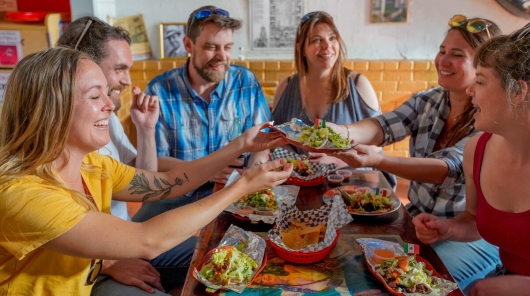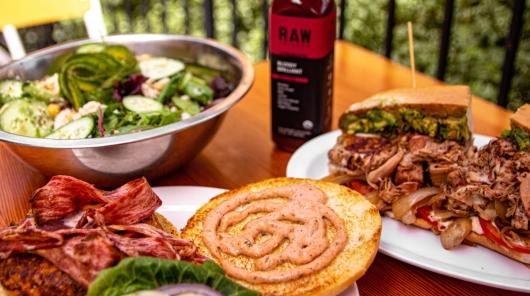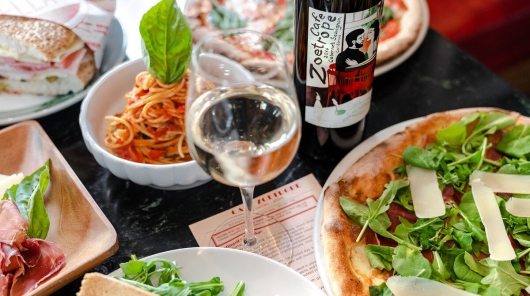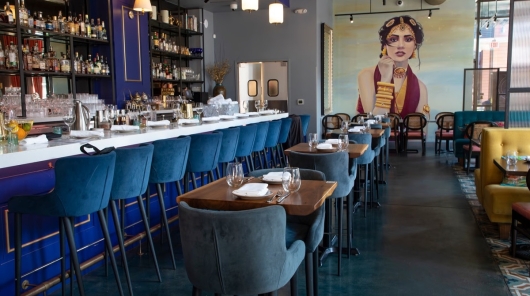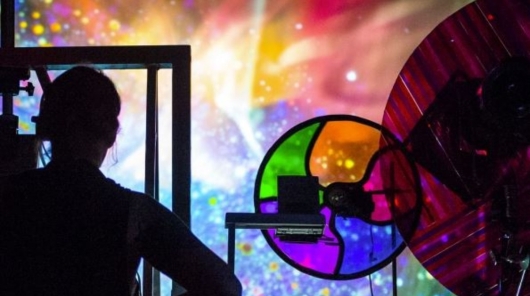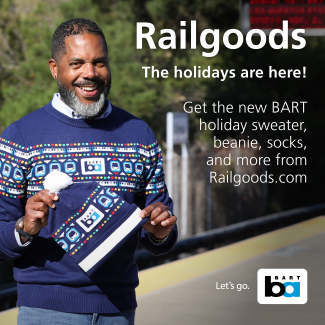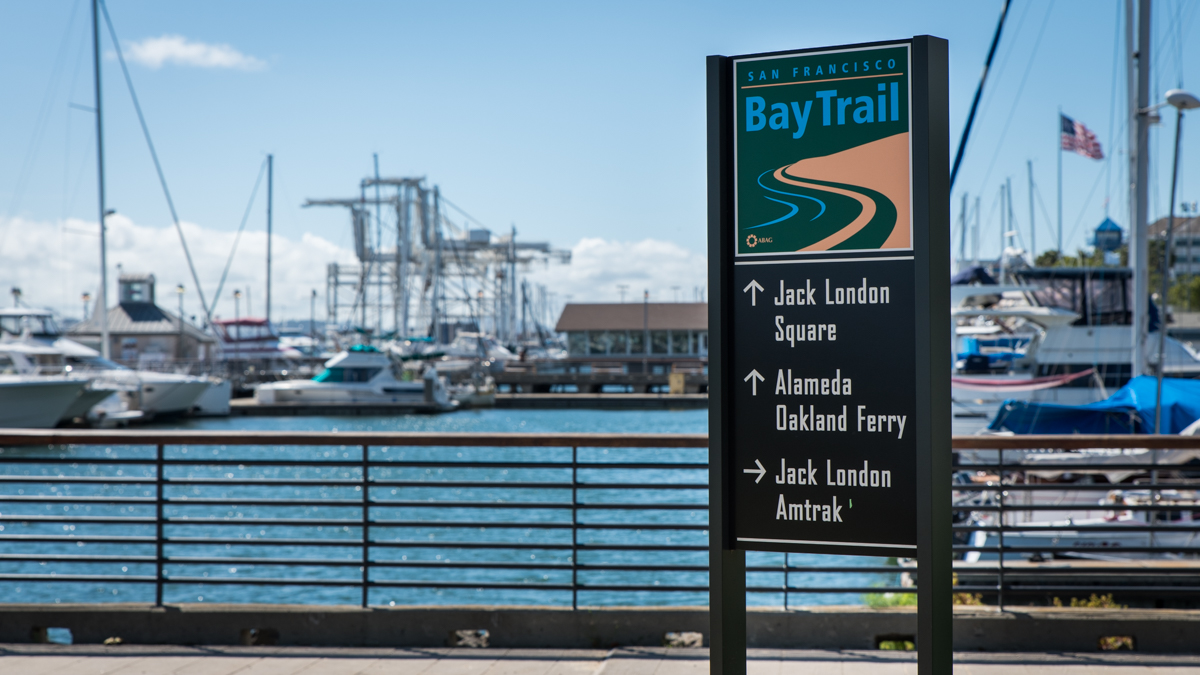
BARTable Walk: Lake Merritt to West Oakland
When:
Enjoy on a nice day
Where:
800 Madison St.
Oakland, CA 94607
United States
BART Station:
Lake Merritt (Oakland)Walk Time:
1.5 hoursSpend an afternoon “sitting on the dock of the bay” in Oakland’s Jack London Square and find out what’s old and what’s new along the city’s historic waterfront on this BARTable Walk from Lake Merritt to West Oakland.
Walk Time: 1.5 hours | Distance: 3 miles | Terrain: Sidewalks, paved paths | Route Map
Exit the Lake Merritt Station (use Exit B1) up to the street level, cross 8th Street and head down Oak Street. Pass under the I-880 highway and take a right onto the Amtrak platform of the Oakland Jack London Square Station (OKJ). This station was built in 1994 to replace the 16th Street Station (aka Oakland Central) that was heavily damaged in the 1989 Loma Prieta earthquake. That station, located to the north on Wood Street, was built in 1912 and once served as the western terminus of the Transcontinental Railroad. OKJ was briefly the western terminus of Amtrak’s California Zephyr line to Chicago before it moved to the Emeryville Station.

Jack London Square Station serves three Amtrak lines: Capitol Corridor (San Jose – Auburn), San Joaquins (Oakland – Bakersfield) and Coast Starlight (Los Angeles – Seattle).
At the glass stationhouse, use the pedestrian bridge to cross over to the other side of the tracks. Walk left down Alice Street to the waterfront and take a right to join the San Francisco Bay Trail. With over 350 miles already completed, this planned 500-mile path circles the entire bay passing through nine Bay Area counties and 47 cities (and crossing seven bridges).
Keep on the trail as it passes the marina lawn to Jack London Square. Named after the American author who spent much of his early years on the waterfront, this area was the center of the city’s port operations stretching back to its incorporation in the 1850s. Today, it’s still a working waterfront and one of Oakland’s most popular hubs for dining, shopping, recreation and community events.
At this end of the square is a replica of the cabin London lived in through the winter of 1897 to 1898 while prospecting for gold up in the Klondike (south of Dawson City). Abandoned shortly after the Yukon Gold Rush, it was discovered by trappers in 1936 who noticed London’s signature on one of the walls.
In 1965, the cabin was dismantled and reconstructed as separate structures from the original logs and materials. One went to Dawson City and the other was transported down to Oakland.
Next door is Heinold’s First and Last Chance Bar where London studied as a schoolboy and later on, pulled together ideas for his future novels. Built in 1880 with timbers from an old whaling ship, it first operated as a bunkhouse before being purchased by Johnny Heinold and reopened as a saloon in 1883. Many of the furnishings are originals, including the tables, potbelly stove and the gas lights (they’re the only business left in the state that uses them). And, yup, the floors are uneven. Blame the 1906 San Francisco earthquake. It shifted the pilings underneath.
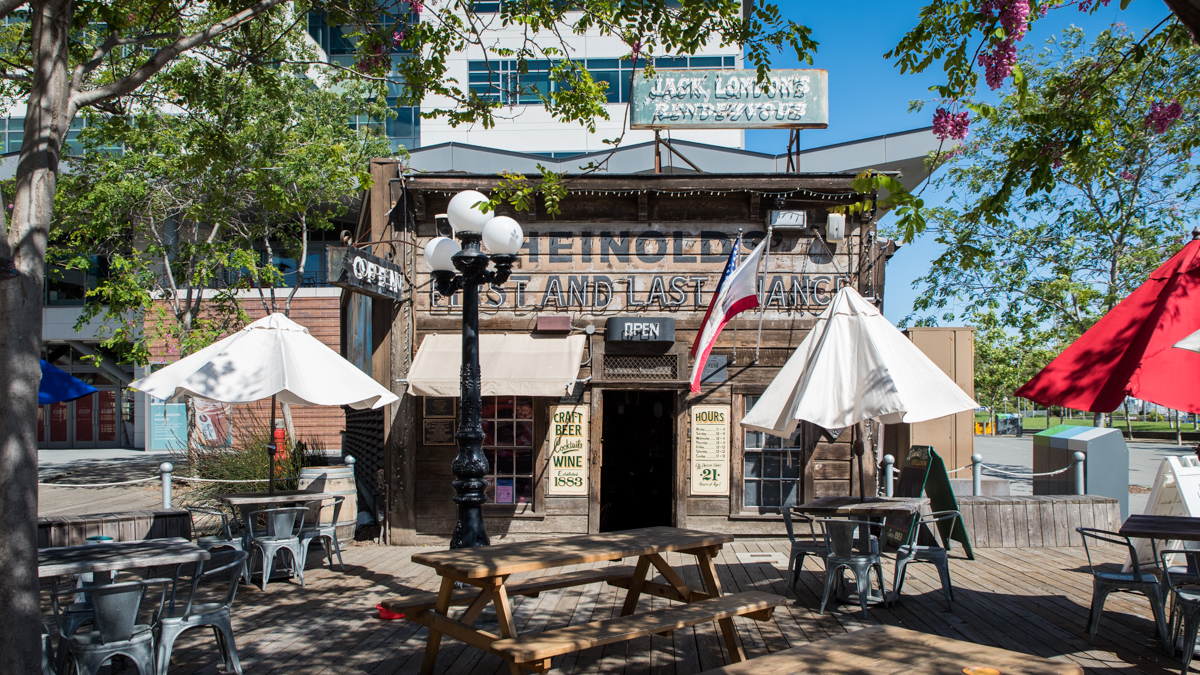
Opened as J.M. Heinold’s Saloon, this National Literary Landmark got its “First and Last” nickname from sailors who stopped in for their first or last drink upon arriving or leaving on long voyages.
Satisfy your sweet tooth and head out back behind the cabin to Miette pastry shop to savor a set of their delectable French macarons. Choose from year-round favorites (chocolate, hazelnut, pistachio) or seasonal flavors (rose-geranium, dulce de leche, chocolate-lavender). Or why not both? (Monday to Saturday, 11am to 5:30pm; Sunday, 10am to 5pm; closed for lunch 3 to 3:30pm).
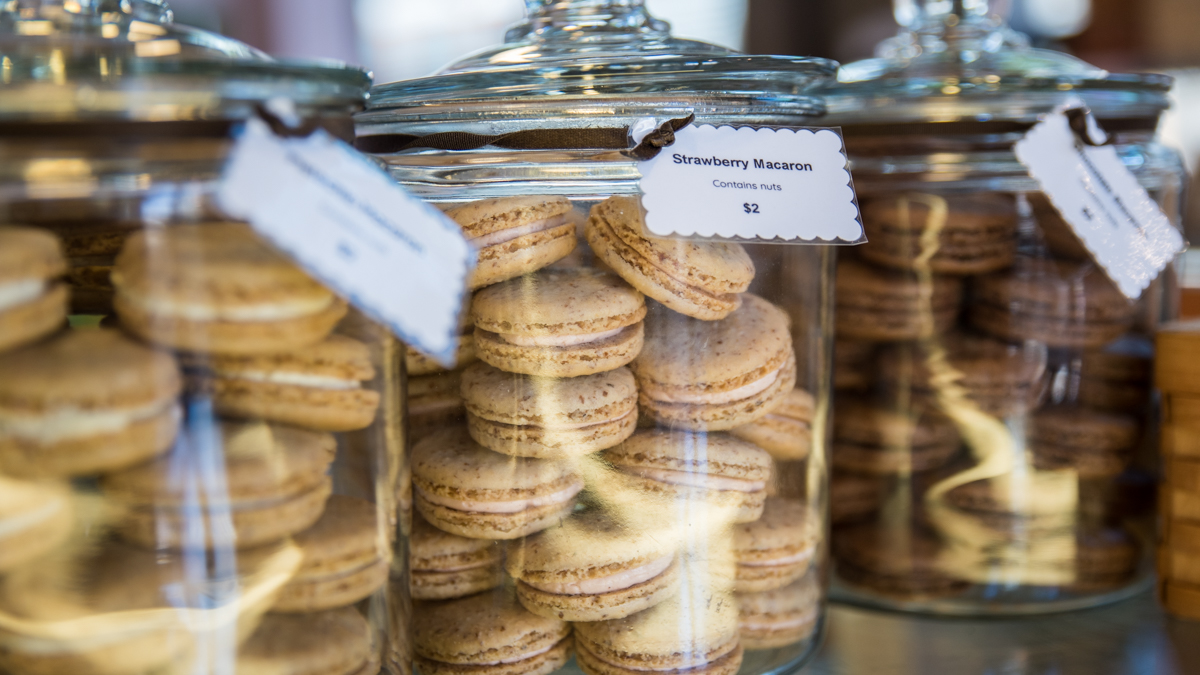
Miette (French for “crumb”) got its start in 2001 at the Berkeley Farmers' Market and also bakes exquisite cakes, tarts, pastries and cupcakes.
On Sundays in the open area behind the cabin (aka “Palm Plaza”) is the Jack London Square Farmers Market. On top of perusing the fresh, local produce and food crafts from the 40-plus vendors, you can also grab some breakfast or lunch. How about sweet or savory crepes, roasted chicken or maybe Arab or Latin American street food? (Sunday, 10am to 3pm; year-round, rain or shine).
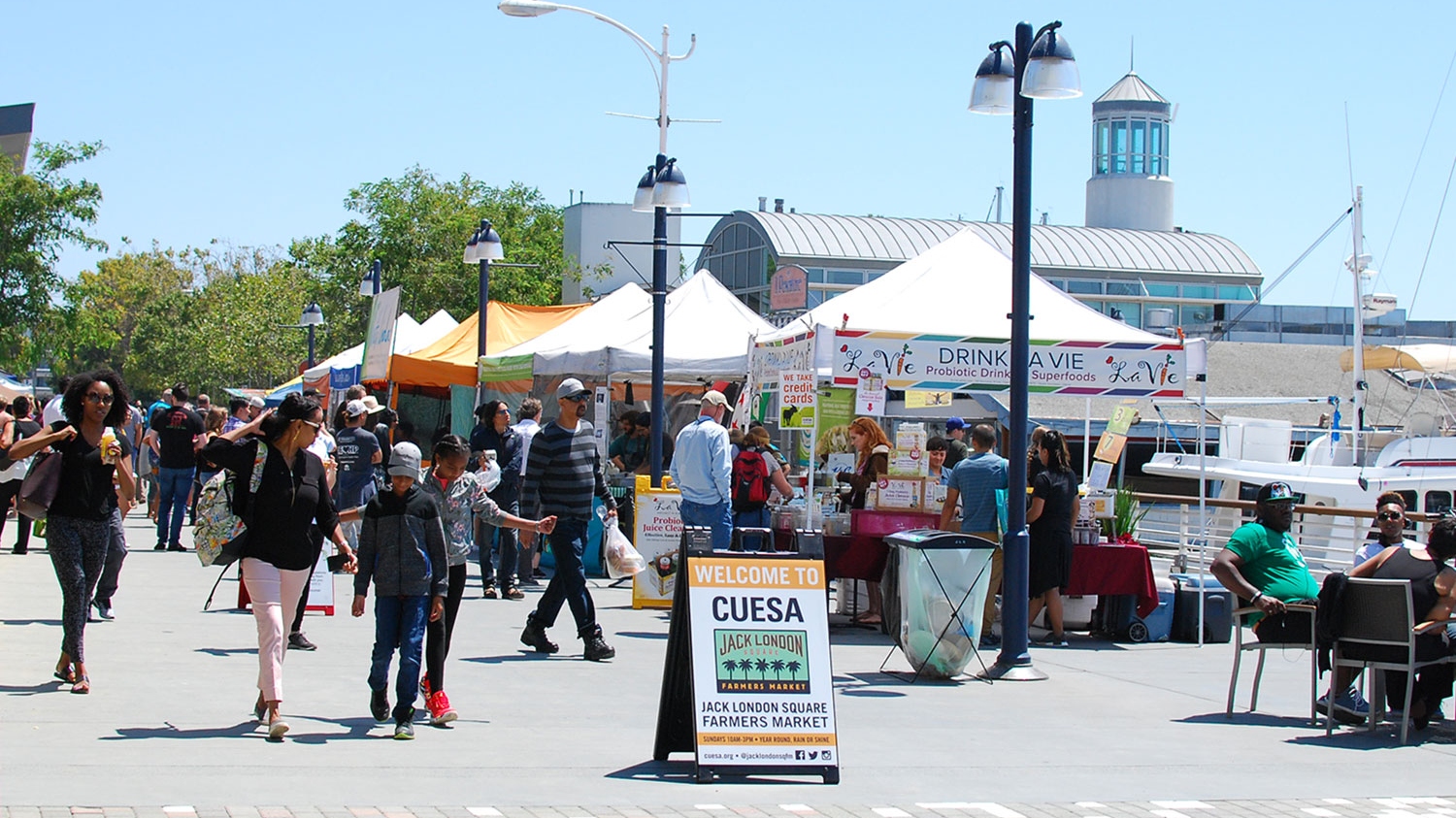
While picking up your berries and veggies at the Jack London Square Farmers Market, you might catch a cooking demo or a food tasting or even a fun activity for the kids. Photo courtesy of CUESA.
Return to the route and continue further into the square along Water Street. This strip is flanked with restaurants – the long-time favorites, Scott’s Seafood, Kincaid’s and Yoshi’s, along with a new wave of diverse eateries, serving Burmese, Thai, Palestinian/Syrian cuisines and more. One of the newer kids on the block is plank, a massive space that’s a must-see to believe. By the numbers, it’s 50,000 square feet of food, drinks and entertainment. Inside are 18 lanes for bowling, 60 HDTVs for catching the game, 60 or so arcade games and a restaurant to chow down on burgers, tacos and pizza. (Daily, 11am to midnight).
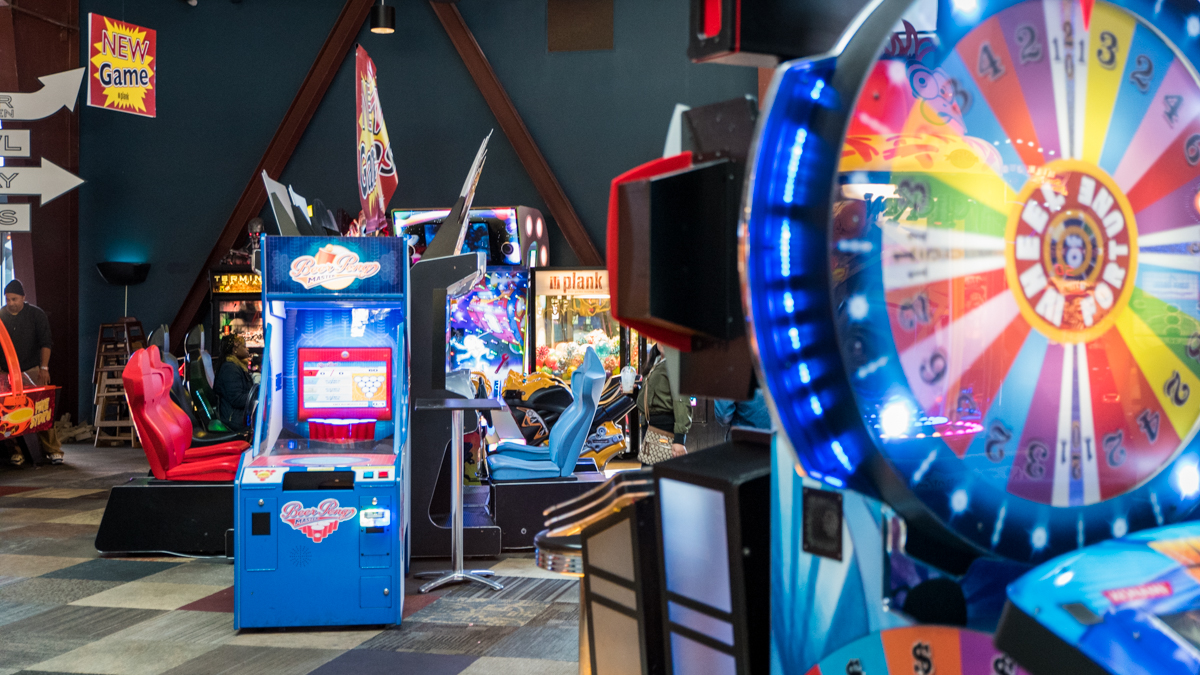
plank's 15,000 square foot beer garden has three 60-foot bocce ball courts, a bar with 48 beers on tap, cornhole sets and a fine view of the waterfront action.
At the corner of Water Street and Broadway, take a left and walk past the statue of Jack London to rejoin the Bay Trail. Follow it along the waterfront to the Oakland Terminal of the San Francisco Bay Ferry, which offers service to the Ferry Building and Pier 41 in San Francisco. In the early 1930s, 50 ferries crisscrossed the bay transporting 50 to 60 million passengers each year. With the opening of the Bay and Golden Gate Bridges, the ferry system was decimated and service from Oakland/Alameda was halted in 1958. It restarted after the 1989 Loma Prieta earthquake when the Bay Bridge was damaged and shut down for repairs.
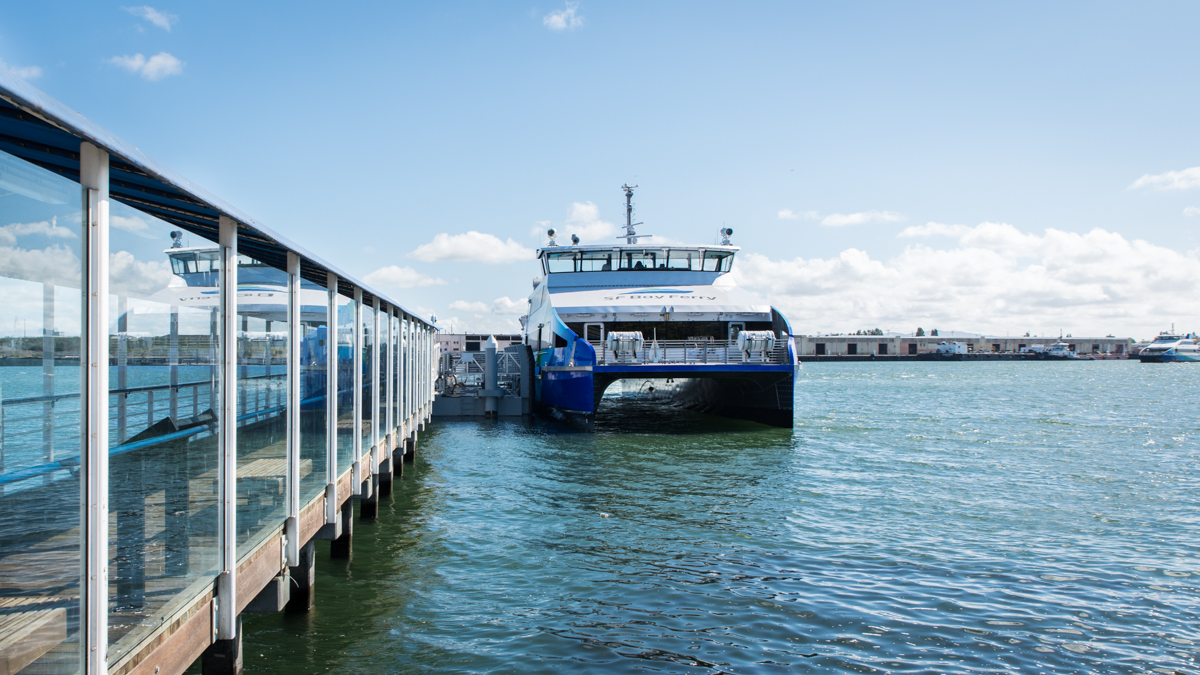
The Bay Area’s ferry system continues its renaissance. San Francisco Bay Ferry reports it carries 31 million passengers annually and ridership has increased 85% over the last five years.
Next to the terminal is the U.S.S. Potomac. From 1936, the 165-foot vessel served as Franklin Delano Roosevelt’s presidential yacht. After his death in 1945, it passed through several owners. Most famous was “The King” himself, Elvis Presley and most notorious, drug smugglers who used it as a front. After being seized in 1980, it was towed to Treasure Island where it sank. It was eventually raised and then sold to the Port of Oakland for $15,000. Kickstarted by a grant from Congress, the Potomac Association with James Roosevelt II (FDR's oldest son) began the long restoration process. In April 1993, after 12 years of dedicated work and a total of $5 million, the Potomac sailed once again and opened to the public in 1995. (Dockside Tours; Wednesday, Friday and Sunday, 11am to 2:30pm; $10 general admission; special events and cruises available).
Before leaving the waterfront, be sure to gaze up at Oakland’s iconic container cranes. These towering structures are the workhorses of the city’s port operations, unloading and loading cargo from around the country and the world onto massive megaships. In pop culture, the cranes are legendary for being thought of as the design inspiration for the AT-AT walkers in “Star Wars: The Empire Strikes Back.” Alas, the claim was debunked by Director George Lucas in a 2007 San Francisco Chronicle interview.
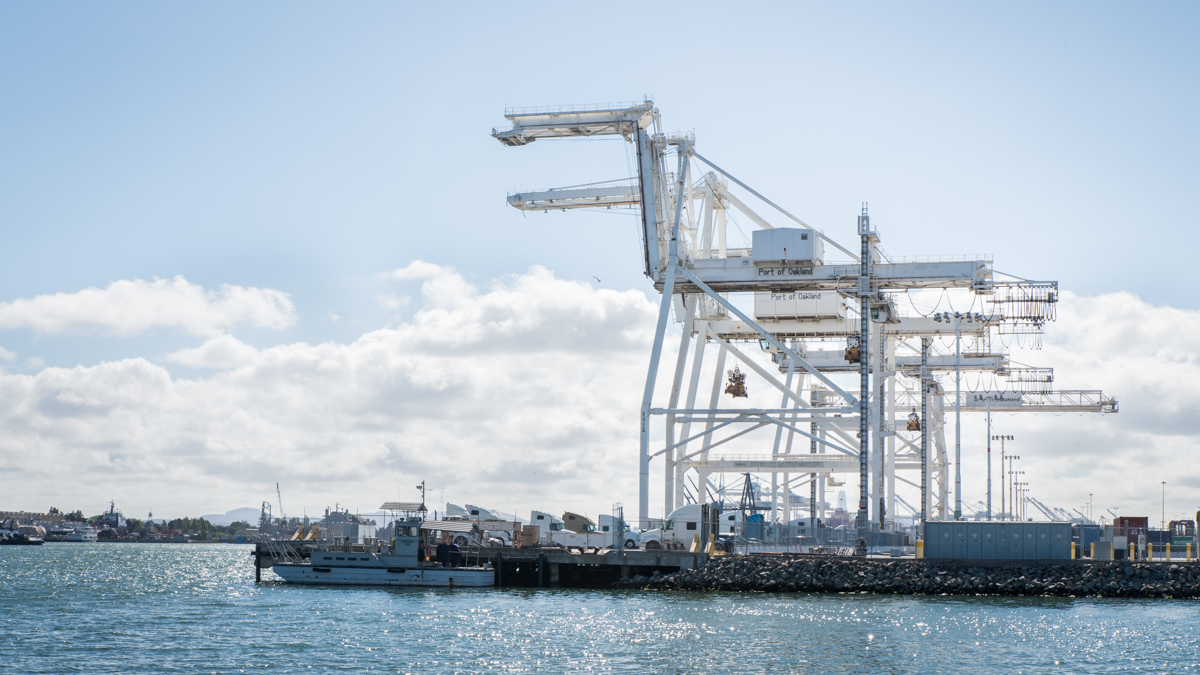
The Port of Oakland operates 33 “ship-to-shore” cranes that service 1,500+ ships annually. Three more are on the way and they will be the tallest on the West Coast at 300 feet.
Head out of Jack London Square along Clay Street and take a left onto 3rd Street. Stick with it through this area of warehouses, port-related businesses and transportation activity. Called Acorn Industrial, this neighborhood was the site of Oakland’s own bustling “cannery row” that processed vegetables, fruits and grains for export. In the brick building on the corner of Linden Street was the California Packing Association that produced goods with the “Del Monte” label. Further north was the Moore Shipyard that built steel freighters and tankers for World War I and handled ship repairs during World War II.
Hang a left onto Linden Street. In the old Standard Underground Cable Company’s building to the right is a hidden gem – the tasting room of Campovida, a family-run winery up in Hopland in Mendocino County. Owners Gary Breen and Anna Beuselinck have roots in Oakland and “Taste of Place” is their way to share the wines, all made with grapes from organic and biodynamic Mendocino vineyards, with their hometown. (Thursday and Friday, 4 to 9pm; Saturday, 1 to 9pm; Sunday, 1 to 6pm).

Order a flight, a glass or a bottle of Campovida wine and enjoy with a charcuterie plate at the bar or out on the patio.
Prefer hops to grapes? Old Kan Beer & Co. is right next door. Started by Oaklanders, Brewer Adam Lamoreaux (formerly of Linden Street Brewery) and Chef James Syhabout, Old Kan’s mission is to create beers that reflect the Oakland spirit and are part of the town’s identity. Grab a portabello burger with a quinoa and beetroot salad and wash it down with their Original pub ale. FYI, “Old Kan” is an anagram for “Oakland.” (Wednesday to Friday, 4 to 10pm; Saturday, noon to 10pm; Sunday, noon to 6pm).

Psst. Did you know there’s an Oakland Wine Trail and an Oakland Ale Trail, too? Pass it along.
To wind up the walk, go back out to 3rd Street and take a left. Continue as it passes the Amtrak Oakland Maintenance Facility and curves to the right to become Mandela Parkway up to the West Oakland Station.
Route Map
Variations and options
- Extend the walk: Start with BARTable Walk: 19th Street Oakland to Lake Merritt or make it a “transbay” day by catching a San Francisco Bay Ferry to the Ferry Building and continuing with BARTable Walk: Embarcadero to 24th Street Mission. (Save the rest of this walk for a return trip.)
- Join a walking tour: The City of Oakland offers monthly tours of Jack London Square and the waterfront from May to October.
- Tour by water: For a unique adventure, how about exploring the waterfront on a kayak from California Canoe & Kayak?
- Walk on Saturday: Head out on a Second Saturday when Jack London Square turns into a neighborhood block party with dozens of vendors, live music and lots of food.
- Hang around: Stroll the "Walk of Fame" at West Oakland or pick up dinner supplies at Mandela Foods West Oakland Market before heading home.
What to bring: Sturdy walking shoes and a daypack with water, bag lunch or snacks (or pick up along the way), sun protection (hat, sunscreen), extra layers or rain gear (just in case). A smartphone is handy for maps and looking up information or taking photos. And, of course, your Clipper card.
About the stations
Lake Merritt Station opened in September 1972 and serves Oakland Chinatown and the areas west of Lake Merritt around Laney College. The station is the site of BART Operations Control Center (OCC), called the nerve center of the 121-mile system. BART’s headquarters were once above the station before moving to the Kaiser Center due to earthquake safety concerns. Plans are in progress to create a new Lake Merritt Plaza & Transit Operations Facility.
West Oakland Station opened in September 1974 and was the last station to open in the initial 71.5-mile BART system when service began through the Transbay Tube. The station was originally called Oakland West, but changed in the 1980s to match the name of the neighborhood. Along its west end runs Mandela Parkway that replaced Cypress Street after its two-tier viaduct collapsed and was demolished following the 1989 Loma Prieta earthquake.

